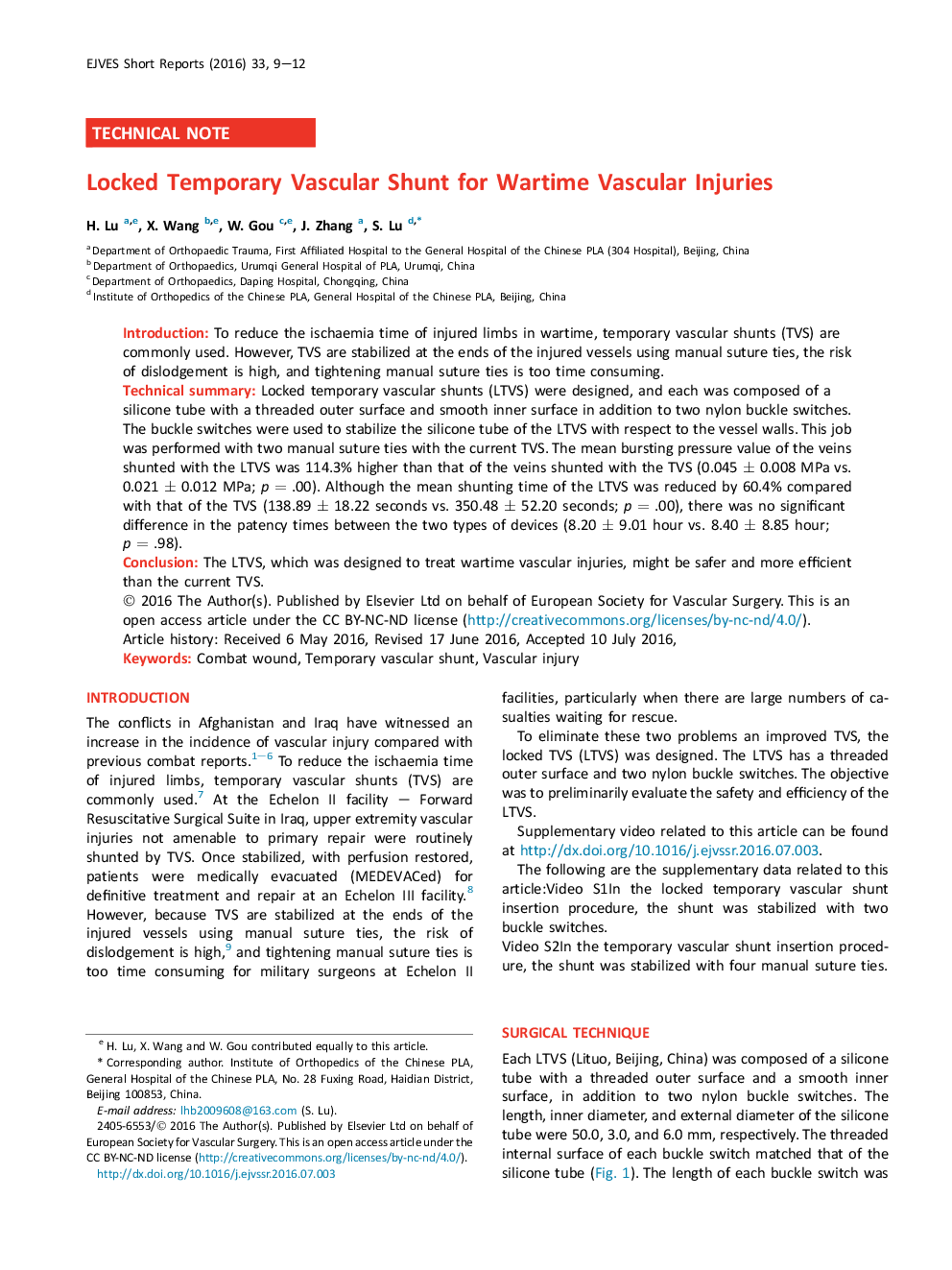| Article ID | Journal | Published Year | Pages | File Type |
|---|---|---|---|---|
| 2911437 | EJVES Short Reports | 2016 | 4 Pages |
•A locked temporary vascular shunt (LTVS) for wartime vascular injuries has been designed.•LTVS is quicker to fix than current temporary vascular shunt (TVS).•LTVS is more secure than current TVS.
IntroductionTo reduce the ischaemia time of injured limbs in wartime, temporary vascular shunts (TVS) are commonly used. However, TVS are stabilized at the ends of the injured vessels using manual suture ties, the risk of dislodgement is high, and tightening manual suture ties is too time consuming.Technical summaryLocked temporary vascular shunts (LTVS) were designed, and each was composed of a silicone tube with a threaded outer surface and smooth inner surface in addition to two nylon buckle switches. The buckle switches were used to stabilize the silicone tube of the LTVS with respect to the vessel walls. This job was performed with two manual suture ties with the current TVS. The mean bursting pressure value of the veins shunted with the LTVS was 114.3% higher than that of the veins shunted with the TVS (0.045 ± 0.008 MPa vs. 0.021 ± 0.012 MPa; p = .00). Although the mean shunting time of the LTVS was reduced by 60.4% compared with that of the TVS (138.89 ± 18.22 seconds vs. 350.48 ± 52.20 seconds; p = .00), there was no significant difference in the patency times between the two types of devices (8.20 ± 9.01 hour vs. 8.40 ± 8.85 hour; p = .98).ConclusionThe LTVS, which was designed to treat wartime vascular injuries, might be safer and more efficient than the current TVS.
